I am a diver. This means my mind and heart are sometimes underwater. Thank you for your understanding.
Anonymous
Dive the Red Sea
Dive Trip Highlights
The Red Sea is designated a top dive destination due to its clear visibility, colorful hard and soft corals, numerous shipwrecks and 7 species of sharks. Itineraries encompass the entire sea from north to south. Popular dive trips feature SS Thistlegorm, Abu Nuhas Reef, Tiran Strait, Ras Mohammed National Park, Brothers Islands, Daedalus, Elphinstone and Zabargad.
Our Dive Services
All Star Scuba Scene provides the amenities divers have come to expect. The dive platform houses freshwater hoses and two rinse tanks. For underwater photographers, the dive deck features a large camera table. Plus, the dive staff offers dive instruction ranging from Advanced Open Water to Tec 50 (PADI) or Extended (TDI).
Specialty Dive Trips
We are tec-friendly. As such, rebreather divers can explore more wreck sites below 130 feet (40m). Interested in a tec course? Once certified, put your new skills to practice at several wreck sites.
Divers desiring enhanced shark experiences should consider booking one of our Shark Weeks held during select weeks in late spring or late fall.
Regions of the Red Sea
Below, find a list of dive destinations in the Red Sea categorized by region. Because we include various dive sites in our itineraries, the information is designed to assist our customers in determining which trip to book.
Central and South Red Sea
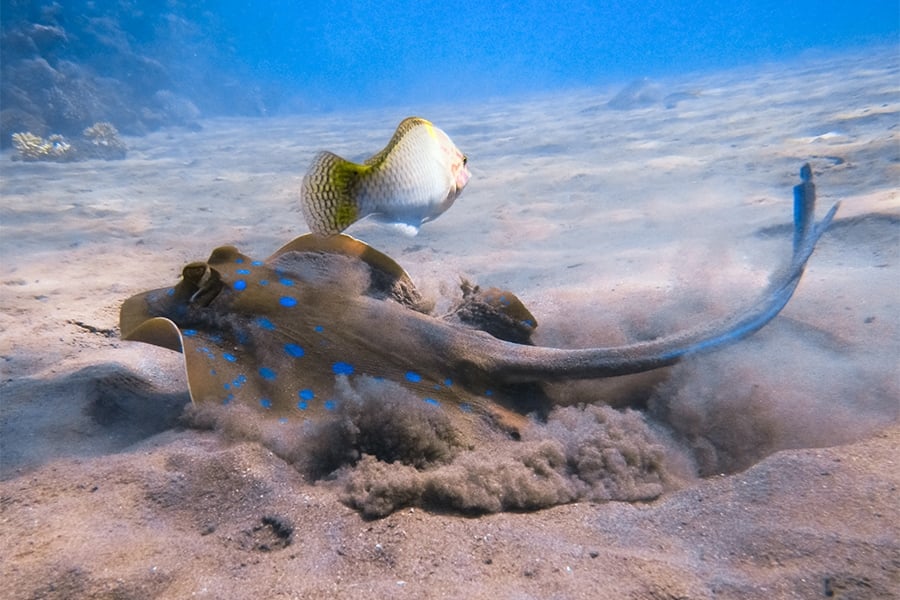
Elphinestone Reef
Resting only a few miles from the coast of Marsa Alam, Elphinstone Reef is likely the most famous dive site in Egypt – and it’s no wonder why. From October to December, oceanic whitetip shark sightings are extremely common. Here, the corals are as pristine and colorful as any diver could imagine.
Steep walls drop off the east and west edges of the reef, which tower up to just a few feet below the surface. On the north end, two pillars mark the end of the plateau. At the southern tip, the sarcophagus archway is a beautiful piece of scenery sitting in deep water beyond recreational limits. Fortunately, shallower water along the reef walls are plentiful and waiting to be explored.
Due to Elphinstone’s exposed location, currents can be quite strong but this means it’s a popular place for pelagics. Along the wall, schooling barracudas, jacks and trevallies hunt for smaller fish. Whale sharks even make their way through the area occasionally. From May to August, manta rays frequent the reef. And from time to time, dolphins, napoleon wrasse and tiger and hammerhead sharks are seen by lucky divers. The beauty of Elphinstone’s soft corals can’t be overstated; they truly are an underwater marvel.
Highlights:
- Sharks – especially oceanic whitetips and hammerheads
- Pelagics – occasional whale sharks and manta rays
- Vibrant soft corals

Brothers Islands
The Brothers Islands are an exciting destination for divers visiting Egypt. More than 40 miles from shore, they’re quite difficult to access unless diving from a liveaboard. These two islands are well-known for their magnificient hard and soft corals and shark sightings. The exposed location results in some strong currents and surface conditions.
LITTLE BROTHER
Diving the walls at Little Brother is a real treat. Since the island is uninhabited, its corals are extremely pristine as evidenced by the vibrant colors. Schooling fish flourish along the full length of the wall, while sharks make frequent visits as they ascend from deep water. Grey reef sharks are most common at this island, but oceanic whitetips are visible from October to November.
BIG BROTHER
A working lighthouse, manned by four to five Egyptian soldiers (and not open to visitors), sits atop Big Brother; from a liveaboard, it’s an impressive sight. The diving is quite different compared to Little Brother because of the shipwrecks, sharks and a sizable fish population.
The Numidia wreck, a colossal British cargo ship that sunk in 1901, rests steeply on the wall. Recreational divers can explore the bow section of the boat. However, the stern is submerged into the depths and only accessible to tec divers. Since 1957, the wreck of Aida II has sat about 100 feet (30m) down on the wall and features many photo-worthy opportunities.
Thresher sharks are periodically spotted at Big Brother, making it one of the rare places divers can encounter the elusive animals. Grey reef sharks are also common, along with oceanic whitetips and sometimes whale sharks.
Highlights:
- Sharks – especially threshers and oceanic whitetips
- Wrecks for recreational and advanced divers
- A fully functional lighthouse

Daedalus Reef
Much like the Brothers Islands, Daedalus also sits in open water a good distance from the shore and has a manned lighthouse. However, the reef is much larger and because of its sheer size leaves divers with many options, depending on skill level and challenge desired.
With year-round viewings of hammerheads, Daedalus is a unique locale. While schooling hammerheads often appear from May to August, divers may also encounter oceanic whitetips, grey reef and thresher sharks. Tunas, trevallies and manta rays are seen here, too.
While sharks and pelagics are the main attraction for this area, Daedalus hosts an astounding array of visual experiences, too. Steep walls, covered with hard and soft corals, are stunningly beautiful and healthy. Many of the hard coral formations are massive creating dramatic scenes perfect for taking underwater photos or videos. Since the reef is situated in a marine park, it showcases some of the Red Sea’s healthiest corals. The vibrant colors, various textures and fascinating structures are world-class.
Highlights:
- Hammerheads – local year-round and schooling seasonally
- Pristine reef with immense hard coral formations
- A fully functioning lighthouse
Deep South Red Sea
At the very southern border of Egypt, near Sudan, the St. John’s area is an absolutely amazing dive site out of reach for day trippers. Limited by access and distance, it is a less populus destination and one only liveaboard divers can enjoy. Explore pristine reefs, home to nonresident pelagics. Many divers consider this region to offer the very best diving in Egypt. Here are some trips that visit this area:
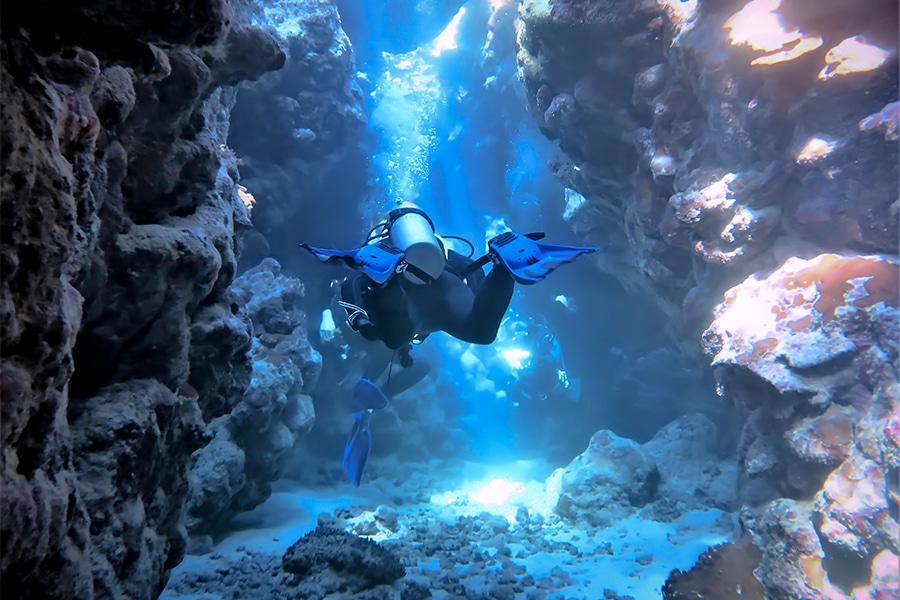
St. John's
St. John’s plateau offers stellar diving in the southernmost Egyptian region of the Red Sea. Discover a number of dive sites, each with their own distinct attractions. From caverns and swim-thrus to tunnels to walls to extremely healthy soft corals and sea whips, St. John’s provides the much-sought variety many divers search for when booking a dive vacation.

Zabargad
Frequent pelagic sightings have earned this southern Egypt dive region a highlly favorable reputation. What pushes Zabargad over the top is the mysterious Russian shipwreck, graceful sea turtles and diverse bird species. The unique topography of pinnacles and sloping walls, decorated with colorful soft corals, surrounds this beautiful island.
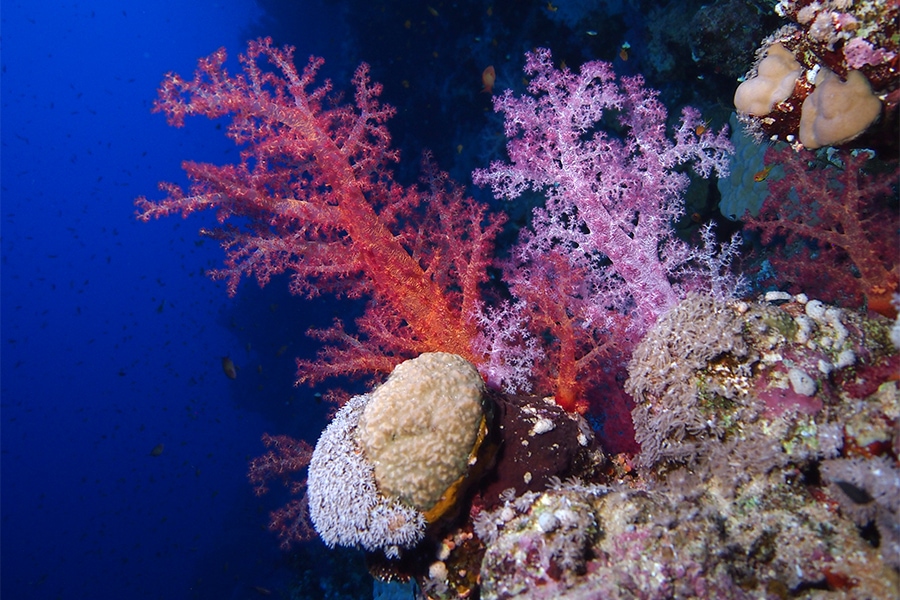
Rocky Island
Of all the Egyptian dives in the deep southern Red Sea, Rocky Island is the most difficult. The island’s many sites range from a minor level of protection from the wind to none at all. The currents can be swift resulting in it being a pelagic hotspot. Whale sharks, manta rays and leopard sharks are known to quickly swim into focus in the turquoise blue waters. Divers will want to keep a watchful eye for new arrivals. Take time to soak in the wall itself; it is covered in reef creatures and fantastic soft corals.
Highlights:
- Pelagics
- Less crowded
- Extremely pristine reefs
Northern Red Sea
To the delight of any wreck diving aficionado, the northern Red Sea is scattered with excellent wrecks at depths suitable for recreational divers. All Star Scuba Scene divers must be Advanced Open Water (AOW) (or equivalent) and/or Deep Diver Speciality (or equivalent) certified to fully enjoy the dive trips.
The wrecks range in age from the 19th century to the 1980s and each carried a unique cargo. Due to the variety of sites in the region as well as safe depths, northern Egypt is an exceptional wreck diving destination.
While Advanced Open Water (AOW) certification (or equivalent) is required on All Star Scuba Scene, Nitrox and Wreck Specialty certifications (or equivalent) aren’t mandatory but useful. The suggested minimum number of dives logged dives prior to arrival is 30. Instruction and certifications may be available on board and will allow a diver to enjoy greater wreck depths. For dive instruction details, click here.
Here are some itineraries that visit this area:
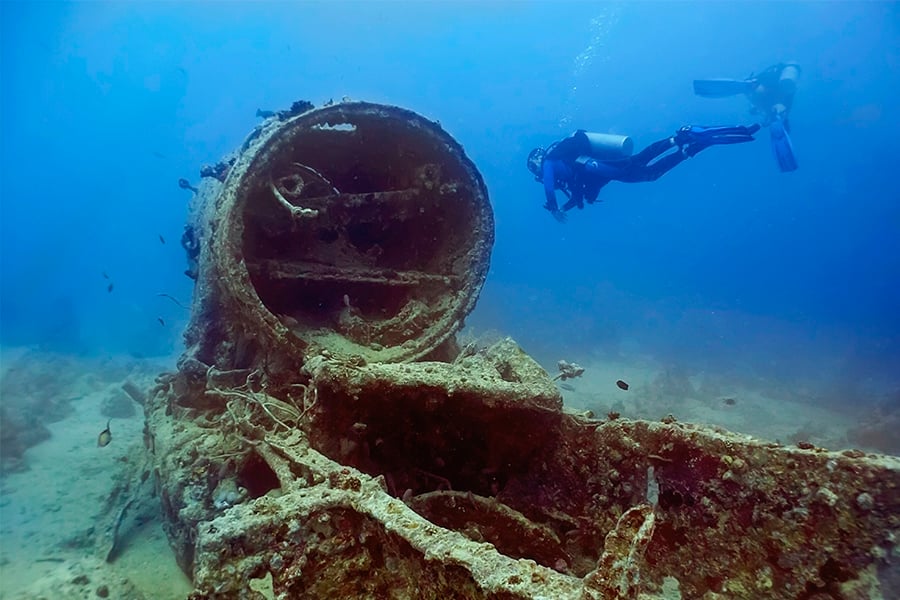
Wreck of the SS Thistlegorm
Known as the world’s best wreck dive, the SS Thistlegorm rests in two pieces east of the Sinai Peninsula. The bow sits at a maximum depth of about 100 feet (31m). However, the ship at over 400 feet (122m) in length, allows plenty of exploring at a shallower depth. Divers should be prepared for a challenging dive with some currents at this site.
The SS Thistlegorm was sunk by German fighter planes in 1941, only a year after her construction. While waiting to enter the Suez Canal, two bombs hit a hold full of ammunition and sent the ship quickly to its final resting place. Jacques Cousteau rediscovered the wreck over a decade later. Today, its popularity among wreck divers is unparalleled.
Divers can view well-preserved remnants of World War II throughout the ship, plus many artifacts scattered around the area. Tanks, rifles, locomotives, boots and Jeeps are among the many items carried aboard the SS Thistlegorm. This site is a true gem for divers and history buffs alike.
In addition to the impressive man-made structure and remnants, the marine life on the wreckage is extraordinary. Newer residents of the wreck are crocodile fish and schools of batfish, among others. Macro creatures, such as colorful nudibranchs, are also ever-present at this monumental dive site.
Highlights:
- Amazing history
- Plenty to see
- Unusual marine life
Wrecks of the North
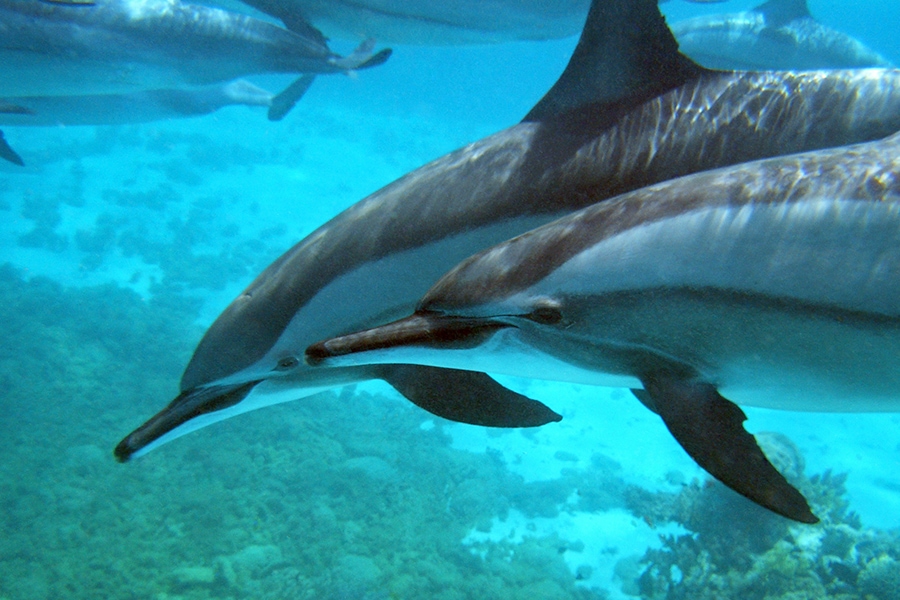
Abu Nuhas
The wrecks of Abu Nuhas Reef draw large numbers of divers each year, as there are four great sites within recreational diving limits. Bottlenose dolphins and a plethora of macro critters are some of the most popular marine life encountered.
The oldest wreck in Abu Nuhas is the British cargo ship, Carnatic, which sunk in 1869. Its wooden hull is caked with beautiful soft corals, and divers can even penetrate parts of the wreck. At a depth of around 60 feet (18m), the Carnatic is a great wreck dive for all skill levels. All Star Red Sea divers must be Advanced Open Water (AOW) (or equivalent) and/or Deep Diver Speciality (or equivalent) certified. It is known as the “wine wreck” because of the shipment it carried. Although its cargo also included gold during its fateful voyage, treasurer hunters should note the British recovered the cargo immediately afterward.
Significantly later, the Kimon M sank at Abu Nuhas. Known as the “lentil wreck,” Kimon M smashed into the reef in 1978 while transporting lentils to India. Like the Carnatic, the cargo of this wreck was promptly retrieved. Though this wreck is a little deeper, the well-preserved wreck is a great site for recreational divers.
In 1981, the Chrisoula K wrecked while carrying ceramic tiles from Italy to Saudi Arabia – hence the nickname, the “tile wreck.” The ship’s stern sits close to 100 feet (31m) down, while the bow is in shallower water accessible by recreational divers. Only tec-level divers can enter the stern’s engineering room.
Two short years later, another shipwreck joined the others – a freighter named Giannis D. It was carrying wood, which is why it is known as the “wood wreck.” This is one of the reef’s most popular wrecks due to its shallow depth and the picturesque views surrounding the wreck. It also offers plenty of opportunities for penetration, some of which are even ideal for those without much wreck-diving experience.

Gubal Island
Small Gubal Island sits between Egypt’s mainland and the Sinai Peninsula. It hosts three major dive sites, and the diverse collection are outstanding. Divers should be prepared for strong currents on any of the sites. Depending on the conditions, the island’s layout provides liveaboards several options to choose from.
Bluff Point is the most notorious dive site at the island. The steep wall, covered in magnificent soft and hard corals, overhangs and unique topography make this area extra special. Discover a fascinating wreck of unknown origins; the broken wreckage is all that remains of the mysterious ship. Bring your camera equipment. The macro creatures found around it are incredible. This is a popular itinerary choice for liveaboards that will continue to travel across the Sinai Peninsula to Tiran Island.
On the northern side of the island, the 19th century wreck of the Ulysses is an exciting place to descend. Its shallow position makes it a nice site for inexperienced wreck divers. Be aware, though, that the current can be formidable every now and then. Take caution should conditions dictate.
Highlights:
- Wrecks for recreational divers with Advanced Open Water (AOW) certification (or equivalent)
- Abundant macrolife and dolphins
- Fascinating topography
Northern Red Sea
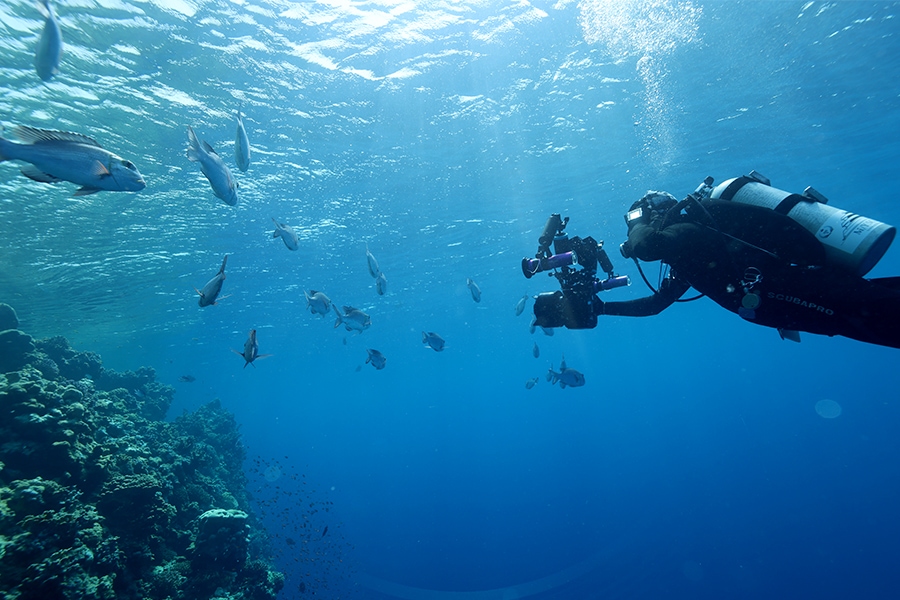
Ras Mohammed National Park
Egypt’s first national park, Ras Mohammed, is beautiful not only above but also below the surface. Sitting right at the end of the Sinai Peninsula, this is a very popular spot for day-trip divers. Visiting via liveaboard gives divers the opportunity to dive the sites when they aren’t quite so busy.
Shark Reef and Yolanda Reef are the main dive events of Ras Mohammed. They’ve been named one of the 10 most beautiful dives in the world. Vivid corals, countless fish and dolphins make for unforgettable diving.
Shark Reef’s steep walls are patrolled by huge schools of pelagic fish. Shoals of barracuda and jacks create the impression that the wall is in constant motion. Divers may focus their attention on the reef’s beautiful coral growth, but remember to periodically take in a 360º view as sharks are often spotted coming in from the open water.
Yolanda Reef is named after the wreck of the Yolanda, which sank in 1980 while carrying a cargo of toilet seats. Yes, that’s correct. Well-preserved remnants remain scattered across the landscape creating an amazing undersea art project with vibrant corals among an immense population of reef fish. It truly is an unexpected sight for reef divers.

Strait of Tiran
To the east of the Sinai Peninsula, the Strait of Tiran offers four of Egypt’s best reefs. They’re known for their incomparable corals with amazing variety in species, textures and colors plus strong currents. The latter bring in huge schools of pelagics. Being in close proximity of Sharm el Sheik, the site can be busy sometimes because of boats with day divers.
The northernmost site, Jackson Reef, boasts impressive corals and an abundance of small reef fish. Schooling hammerheads can also be spotted here by lucky divers who visit at the right time of year. Since it is the furthest from Sharm el Sheik, day boats don’t visit this site quite as frequently as some of the other reefs.
Slightly further south, Thomas Reef is the most popular of all the sites in this area. It offers a phenomenal variety of dives from relatively shallow wall diving to tec diving into the well-known Thomas Canyon. The currents can be strong, so divers usually do this one as a drift dive across healthy corals and sandy areas with marine creatures.
Woodhouse Reef, situated even further south, is an unusual dive site and in a good way. With coral growth from the surface down, the wall turns into a slope as you continue descending. If conditions are right, unpredictable currents make it possible to experience a swift drift. This somewhat resembles the Washing Machine dive site in the Bahamas.
The southernmost dive site, Gordon Reef, offers the easiest diving out of the four. With its shallow plateau and lighter currents, divers can enjoy beautiful corals and interesting marine life with ease. Discover another shipwreck, Louilla, situated above the waterline. Unfortunately, it is not dive-able but is a unique sight for those approaching the reef.
Highlights:
- Dolphins
- Healthy corals and abundant fish
- Above-water shipwreck
Recreational Diving
The vast majority of the wrecks and reefs are best explored by experienced divers. Because many of the sites are deep dives, beginning-level divers may not be able to enjoy all sites. For this reason, All Star Scuba Scene divers must be Advanced Open Water (AOW) (or equivalent) and/or Deep Diver Speciality (or equivalent) certified. If you are not AOW, you can complete your certification on board. For dive instruction details, click here.
Please note, if your last logged dive is more than one year ago, you will need to participate in a refresher dive.
Technical (Tec) Diving
Tec diving takes scuba enthusiasts beyond the normal range of a scuba experience. This can include diving longer in shallower water or allowing a diver to go to depths greater than 130 feet (40m) or into more challenging situations such as inside caves and within shipwrecks.
In most cases, special tec equipment is required. The All Star Scuba Scene is rebreather friendly, offers side-mounted pony tanks for easier ingress and egress in tight quarters instead of back-mounted tanks, and the use of nitrox and gas mixtures.
If interested in tec diving instruction, click here.
Dive Equipment Rental
Our dive deck is where your equipment will be stored throughout your trip. All Star Scuba Scene provides the following:
- Dive tanks – 80 CF (12L) tanks and weightbelts. Additional tanks over limit – $51.00 per week. Upgrade to 100 CF (15L) – $57.00 per week.
Available for rent by the week:
- Full equipment* including dive computer – $177.00
- Regulator – $46.00
- Dive computer – $46.00
- Dive light (torch) – $46.00
- Wetsuits (5mm long, XS-XXL) – $46.00
- Buoyancy compensator (BCD)(XS-XXL) – $46.00
- Mask & snorkel – $9.00
- Fins – $17.00
* BCD, regulator, dive computer and wetsuit
Technical (tec) rental equipment by the week unless noted:
- Nitrox package – $100.00
Nitrox single refill – $8.00 each - Gas mixes – ask for pricing
- 16 CF (3L) side-mounted pony tank – $46.00
- Manifold twinset – $85.00
- 100 CF, 80 CF, 50 CF (15L, 12L or 6L) stage with rigging – $51.00
- Rebreather cylinder set – $97.00
- Stage regulator -$51.00
How it works:
The Trip Application form is where you’ll order rental dive equipment.
Payment will be made on board, payable in cash (USD$ dollar, GBP£ pound sterling , EUR€ Euro, or EGP£ Egyptian pound) or by credit or debit card, if the amount is greater than $25 USD. Credit cards will have a 3 percent surcharge added; debit cards have no surcharge. Sorry, American Express is not accepted.
Dive Instruction
Our dive crew is here to help you. You can complete your Advanced Open Water (AOW) scuba certification course on board and/or advance your tec certification level with our instructor.
Available courses:
- Advanced Open Water certification – $285.00 (PADI)
- Nitrox – $182.00 (PADI)
- Tec 40 (SDI/TDI) – $513.00
- Tec 45 (SDI/TDI) – $542.00
- Tec 50 (SDI/TDI) – $627.00
Ask the dive instructor upon boarding if they other specialty courses they can offer you.
How it works:
On the Trip Application, indicate if you’d like dive instruction. Pricing is detailed on the Dive Instruction page and payment is made while on the boat.


